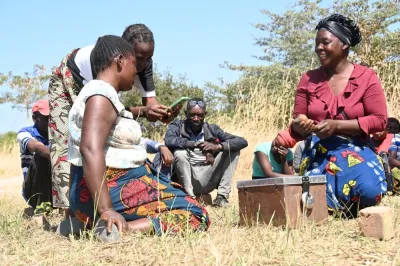How to Fight Fraud Against Government Program Beneficiaries in India

In 2023, scammers stole more than $1 trillion from victims worldwide, with Asia emerging as a hotspot for financial fraud. The Indian Cybercrime Coordination Centre (I4C) found that Indians suffered cumulative losses worth approximately $214 million (INR 1,776 crore) from January to April 2024 as a result of cyber frauds.
While digitization has revolutionized the delivery of government benefits, expanded access and minimized exclusion, it has also amplified fraud. Fraudsters have started to target government program recipients through fake messages and calls, often posing as government agencies or officials. They prey on vulnerable individuals, particularly those with low literacy levels who rely heavily on digitally disbursed government support, to trick them into giving money or revealing personal information.
The study uncovered a surge in fraud cases following government announcements on fund disbursement or notifications that require citizen action to continue accessing government services. These challenges pose a significant threat to the effectiveness and integrity of digital benefit delivery.
Accounts of defrauded government program beneficiaries
Case 1: Manju from Rajasthan, India, received a call from a scammer posing as a central government official, who informed her that her application for the PM Awas Yojana, a credit-linked subsidy program for affordable housing, had been selected. The fraudster asked her to submit a registration fee of $600 (INR 50,000) to finalize her residence allotment. Elated, Manju made the payment. Later, when she received no confirmation or house, she realized she had been defrauded.
Case 2: Aftab, a 70-year-old veteran daily wage worker in Dhaka, Bangladesh, benefits from the government’s old age allowance. One day, a fraudster posed as an official from the Department of Social Services and informed him that his account had been inactive and he would not receive the next payment. The scammer asked Aftab to share a code sent to him via message to reactivate his account. The fraudster then used this code to access his bank account and robbed him of all the money in his wallet account.
How do scammers entice beneficiaries who receive social payments digitally?
Fraud perpetrators continuously evolve and adapt tactics to exploit vulnerable beneficiaries. They often promise assured receipt of government benefits or create a fear of halted payments to manipulate customers into sharing sensitive details. Low digital capability and literacy makes many digital payment program account holders particularly vulnerable. Their need for benefits drives them, and they often overlook privacy protection and secure banking practices, increasing their susceptibility to scammers.
One key point of vulnerability is found in the enrollment process for government programs. Beneficiaries with low literacy levels tend to need assistance with the enrollment process, so they provide physical copies of their documents to government program representatives. The representatives may hold on to these documents to complete the beneficiary’s enrollment process later, increasing the risk of data theft. Many programs also involve lengthy documentation procedures, further exposing recipients to the risk of fraud and data leakage.
Program beneficiaries may also be unaware of or unable to access official information sources on aid disbursements, such as touchpoints, officials or websites. When sophisticated fraudsters can access sensitive information, such as ID details, bank account numbers and enrollment application numbers, their calls or requests seem legitimate and can convince unaware customers to fall for their schemes.
How can the government help beneficiaries avoid becoming victims of fraud?
A customer protection-oriented approach is needed to decrease fraud among government program beneficiaries. There are a few clear steps that can be taken:
- Education: Beneficiaries must be educated on safe banking practices. This can be done through channels already used for program-related awareness initiatives, such as websites, posters and community outreach programs. Existing digital literacy programs should incorporate a comprehensive customer protection component to enhance beneficiaries’ ability to navigate online platforms safely and securely.
- Communication: The government should establish a centralized contact number to provide information about all government programs. This number would serve as the sole communication channel from the government, so that beneficiaries can easily identify messages which come from the official source as opposed to fraudulent messages. The government should send text messages and use interactive voice response systems (IVRS) during program enrollment and disbursement phases to alert customers. These communications should inform beneficiaries about:
- Prevalent fraudulent activities related to government programs.
- The importance of protecting personal information.
- Ways to recognize fraudulent activities.
- Clear instructions on how and where beneficiaries can seek support if defrauded.

- Streamline and secure enrollment processes: A data minimization and proportionality approach is needed to streamline the enrollment processes for government programs and ensure beneficiaries are not asked to provide the same information repeatedly. A secure repository of beneficiary data can serve as a source for such details, ideally as part of a digitized end-to-end enrollment process.
The figure below maps out these recommendations across the phases of government programs:

A multifaceted approach must emerge to safeguard government program beneficiaries against fraud. and ensure that vulnerable individuals, such as Manju and Aftab, continue to receive the support they need without falling victim to deceit.


